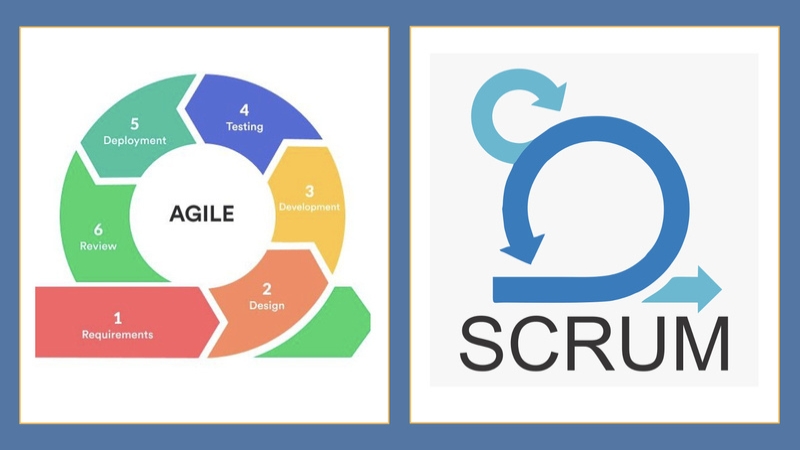
Agile methodology is a set of software development practices that emphasize collaboration and feedback. Scrum is a specific type of Agile methodology that uses a self-organizing team to create products incrementally. What's the difference between Agile and Scrum?
The main difference between Agile and Scrum is that while Agile emphasizes collaboration and feedback, Scrum relies on a self-organizing team.
What is agile and what is scrum?
Agile and scrum are two popular software development methodologies. They're both based on the idea that projects can be improved by breaking them down into small, manageable tasks and then coordinating everyone working on the project so that each task is completed as quickly as possible.
The key difference between agile and scrum is that agile emphasizes creativity and collaboration while scrum focuses more on efficiency. Agile methodologies encourage teams to work together in short, frequent bursts of activity called “sprints”, while scrum allows for a series of shorter, sequential “tasks” to be completed.
Both agile and scrum have their supporters and detractors, but they've both been shown to be successful in achieving the goals of their respective methodologies. If you want to master the scrum methodology, Agile and Scrum Training can help you out
Agile Vs. Scrum: The Differences
The agile development methodology, also known as scrum, is a popular choice for software development projects. But what are the key differences between agile and scrum? In this article, we will explore these differences and their implications for project success.
- Agile methodology emphasizes working incrementally and quickly creating prototypes to test assumptions. This approach contrasts with the traditional waterfall model, which puts greater emphasis on developing a comprehensive plan in advance and proceeding step-by-step until the project is complete.
- The goal of agile development is to deliver value to customers as early as possible in the project life cycle. This means that features are delivered frequently and efficiently through frequent iterations of product design. In contrast, scrum requires that teams commit to completing certain tasks (such as coding requirements) before moving on to new ones.
Agile and Scrum are two popular software development methodologies. However, what is the difference between these two methods? agile emphasizes collaboration and feedback throughout the project, while scrum focuses on delivering features in a fixed period of time.
Other key differences include how tasks are broken down and delivered, as well as the role of leadership within each methodology.
What is the Purpose of agile and scrum?
Agile methodologies and scrum development frameworks were initially developed to improve the speed, efficiency, and quality of software development. These methodologies encourage collaboration among team members by providing iterations that are short, predictable, and deliverable. The goal is to create a product that is customer-ready as soon as possible.
The Principles of Agile Development
The principles of agile development are based on the idea that projects can be completed more quickly and with fewer errors by using a collaborative approach that allows team members to share responsibilities and work together asynchronously. The key concepts of agile development are collaboration, feedback, transparency, continuous learning, and adaptation.
Collaboration is the key to success in agile development. Team members must be willing to share responsibility and work together asynchronously in order to make progress. This involves setting up communication channels between team members so that they can effectively share information and coordinate their efforts. Feedback is essential for ensuring that team members are working efficiently and meeting the goals of the project. Transparency ensures that all team members understand how the project is progressing and what challenges remain. Continuous learning is important in an agile environment because it ensures that team members are always keeping up with changes in technology or industry practices.
How do you apply agile in software development?
Agile methodology is a software development process that emphasizes constant adaptation and improvement. It has been popularized by companies such as Google, Facebook, and Amazon. There are several ways to apply agile software development. One way is to use scrum as the framework for managing projects. A scrum is a lean process that focuses on delivering products on time, with features that are well tested and of high quality. It uses short cycles (sprints) with clear goals and frequent feedback to the team so that they can adapt their work accordingly. Another way to apply agile is using Kanban boards to manage work progress and resources. Kanban boards help teams track progress by showing how much work is left in each stage of a project's life cycle (creation, development, testing, deployment).
Benefits of using agile in software development
Agile development has many benefits for software developers. These include improved communication, flexibility, and speed. By using agile methods, developers can work together more effectively and quickly produce quality code. Additionally, agile allows for changes to be made quickly and easily, which leads to better software reliability.
Conclusion:
In conclusion, agile and scrum are different philosophies that focus on different ways of developing software. While both have their benefits, it's important to choose the right one for your team's unique needs. So, what is the difference between scrum and agile? The most significant difference is that agile emphasizes flexibility and adaptability while scrum focuses on efficiency.
- Log in to post comments